yeah, i just have so many things buzzing in my head I cant resit putting them down, Maybe instead of a defense agreement just a trade agreement combined with a nonstop wooing campagin of the mexican public that Mcreynolds could pull of due to her personality.Unlikely that a democratic Mexican government would favour the US. ITTL, Mexico's historically been close to the PSA - joint nervousness over American policies - and there's a lot of PSA investment in their economy. They wouldn't want to disturb that.
Though that's a topic for another time. We'd agreed not to move things on chronologically, remember?
You are using an out of date browser. It may not display this or other websites correctly.
You should upgrade or use an alternative browser.
You should upgrade or use an alternative browser.
Photos of the Kaiserreich
- Thread starter pattontank12
- Start date
yeah, i just have so many things buzzing in my head I cant resit putting them down, Maybe instead of a defense agreement just a trade agreement combined with a nonstop wooing campagin of the mexican public that Mcreynolds could pull of due to her personality.
Still unlikely - you're talking fifty plus years of less than ideal history, that doesn't just get overturned in a few years. The US is not viewed favourably in many countries - Mexico being one of them - and that kind of thing takes time to change.
TBH, I think you're moving kinda fast in general with TTL's US. I'd established that by 2018, although the economy was mostly stable, they were a country with internal divisions and that didn't have much of a power projection capability. Reversing that would take a lot longer than a couple of years.
Still unlikely - you're talking fifty plus years of less than ideal history, that doesn't just get overturned in a few years. The US is not viewed favourably in many countries - Mexico being one of them - and that kind of thing takes time to change.
TBH, I think you're moving kinda fast in general with TTL's US. I'd established that by 2018, although the economy was mostly stable, they were a country with internal divisions and that didn't have much of a power projection capability. Reversing that would take a lot longer than a couple of years.
oh i know, it would be the start of a LONG process to push mexico into neturality. the basic Idea of Palins foregin policy is to help get rid of domestic divisions, Make everyone proud when America saved the day in some foreign land, sure their are some shady things going on but nobody in the American media wants to pay attenion to that, why would you when you can have great footage of American troops handing out supplies to grateful residents in Venezula, Protecting freedom and Soverignty in Panama, and Building up infrasturcture in Haiti. This makes their viewers feel good about themselves and gets them better ratings. And do remeber they are playing in their back yard and they are unoffically trying to open up connections from the old NRC networks and it dosent take much to topple the unstable places that the USA is targeting right now so yes they have the power projection to do this.
oh i know, it would be the start of a LONG process to push mexico into neturality. the basic Idea of Palins foregin policy is to help get rid of domestic divisions, Make everyone proud when America saved the day in some foreign land, sure their are some shady things going on but nobody in the American media wants to pay attenion to that, why would you when you can have great footage of American troops handing out supplies to grateful residents in Venezula, Protecting freedom and Soverignty in Panama, and Building up infrasturcture in Haiti. This makes their viewers feel good about themselves and gets them better ratings. And do remeber they are playing in their back yard and they are unoffically trying to open up connections from the old NRC networks and it dosent take much to topple the unstable places that the USA is targeting right now so yes they have the power projection to do this.
Oh, I get you - they're focusing on what they can do. And yeah, they could reach places like Haiti or Panama or Venezuela - that's not an issue. Just pointing out that some things would definitely be a bridge too far for them for quite some time
Also, there'd still be a fair amount of pacifism in the US. Bear in mind: with the Civil War, the Second North American War and NRC jingoism as examples of why militarism=bad, the liberal states are fairly strongly pacifist by inclination. So adventurism would need to be carefully balanced and the government couldn't do too much at once - dribs and drabs rather than all at once.
Oh they cant do anything big outside the western hemisphere for at least two decades, outside the scope of this thread at least for now. Right now they are focusing on shaping the Caribeen to their wishes, which is rather easy for them. They have plans to extend their tentacles into south America, but those projects wont get kicked off until Palin reaches her second term, which again is outside the scope of this tl. So yeah they are focusing on what they can do, they also have a habit of putting troops from liberal states: New Yorkers,Marylanders and Minnesotans, on the most feel good type assignments to make sure that is what gets sent back home in the mail and mutes oppossition from SDs to his foreign policy. One question for you what would be the opinion of the average guy from New York city on the new "freedom agenda" with its constant interventions?Oh, I get you - they're focusing on what they can do. And yeah, they could reach places like Haiti or Panama or Venezuela - that's not an issue. Just pointing out that some things would definitely be a bridge too far for them for quite some time
My interpretation of this is basically:
Federalists = France, socialism mixed with capitalism in a gigantic fat mess.
Unionists = "pure" syndicalists, very union-power-to-the-max.
Foster = a little purge-happy but no worse than mid-revolution Lenin. (still not the good guy but not as bad as...)
Browder = Stalin.
Close. an analogue to Foster's policy's probably would be Tito's Yugoslavia over mid-revolution Lenin. though still rather authoritarian all things considered.
I do look forward to seeing how you all adjust to the numerous changes both big and small for the various Americas.
One question for you what would be the opinion of the average guy from New York city on the new "freedom agenda" with its constant interventions?
Mixed. Many would be opposed to any kind of interventionism; others would be supportive in principle but would be more interested in and pressing for more being done at home. There’d be a general feeling that the US should primarily focus on tilling its own field.
As far as I know, Sir Christopher Lee is a native Englishman.Some more random pop-culture tidbits from my KR setting:
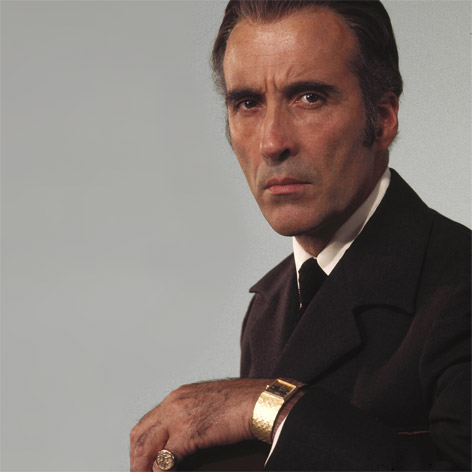
Lee, a half-Italian Exile
As far as I know, Sir Christopher Lee is a native Englishman.
His mother was an Italian countess.

Das Boot (1981):
Das Boot was a German adventure-war film made by Wolfgang Petersen, starring Juergen Prochnow, Herbert Groenemeyer, and Klaus Wennemann. The movie adapted a 1973 book by Lothar-Guenther Buchheim, and tells the fictional story of an Imperial German U-Boot U-96" and its crew and their struggle to survive the war. The film depicts simultaneous fear and excitement of life in the U-Boot, the life of the hunt, and life in the depths. Wolfgang Petersen in the production of the movie sought to make it as realistic as possible, for the movie a U-Boot exterior and interior were created to scale. As a result of this detail, the movie was one of the most expensive German films made at the time. While the German film industry was cautious of the film's cost, 32 million Deutsche Marks ,the movie became a surprise hit when released in September 1981. Das Boot was an instant critical and commercial success worldwide. In Mitteleuropa, the film was a blockbuster, still ranking in the top 5 in many member states' box offices adjusted for inflation. Overall worldwide the film made a total of 250 million DM, adjusted to nowadays 800 Million DM. Even Kaiser Louis Friedrich saw Das Boot. Critically, the film would receive universal praise from the press. In Germany it would win the Kaiser's Prize as best German film of the year at the Deutsche Filmpreis, and it would win awards for best Director, Script, and some other technical awards. The movie was an instant classic, and in a later poll by the TV channel ZDF of viewers, it would be rated as the best German film of the 80s. The film would be followed by a re-release of the film in an extended version in 1985, and a miniseries version in 1987. In Mitteleuropa, the film was credited with creating a craze of "Abenteuerfilme", films depicting adventures by German citizens to far lands in the interwar-WK2 period.
The legendary Messerschmitt of the German Luftwaffe. Introduced in 1938 during the Internationale's invasion of the Rhineland. The ME played a critical role in the survival of the German Empire and MittelEuropa.
Armored Vehicles of the Second Weltkrieg

Nicknamed "The Tank that Built the Reich" the Panzer IV was the most produced tank of the conflict and is frequently listed as one of tanks ever made. Its speed, 32 - 48 kmph (24 - 26 mph), was a major boon over many of its competitors and its reliability was also a large bonus. In the early days of the war the French had no counter to its heavier armament keeping it barely within the 'medium tank' designation. Variants were made to fit every situation, a AA, artillery, anti-tank and ungunned APC version were all produced within the long lifespan. Because of its almost thirty year lifespan it's visage has become a staple of the public's perception of German military might with famous series Tank Combat: World at War featuring it predominately along with its brothers the Panzer III and Panzer V. Its large caliber was perfect for punching through the light armor of Communard armor and its only real challenge was the Unionist Cromwell whose designation of an 'infantry tank' betrayed a large gun and heavy armor. Some of the most famous tank aces in the Weltkrieg, Otto Carius, Paul Egger, and Ukrainian Dmitry Lavrinenko all earned their fame in this tank. It's last iteration, the Panzer IV A-5 was phased out in 1960 and the Panzer V 'Panther' took its place as a new class of tank, the Main Battle Tank, of the German Wehrmacht.

Sturmgeschutz III (StuG III)
Producer: Krupp
In Service: 1935 - 1942
Armament: 7.5 StuK L48
Armor 20 mm
Number Produced: 7,500The StuG class of tank destroyers had its roots in AT variants to the Panzer III used in interventions in various points across the globe. Eventually Krupp was paid to develop a whole new class of S-P AT guns as the Communards showed off their own version (that was never produced) at the 2nd Victory Day Parade. Development was however rushed and sloppy with more than a few kinks left in that were unable to be ironed out before production started in mid-1935. The StuG was sent out and quickly gained a reputation as a capable, if a bit unreliable weapon. Repairs were constant and more than one burned out due to a fault in the cooling system that wasn't detected in the limited testing done. It was kept around after the Panzer IV-AT was rolled off the production line more as a stop gap measure rather out of love for it. However, by the time the first line of Pz IV-AT's came out the Second Weltkrieg had erupted and spread across the world. The StuG III was a rather even match for its Communard opponents and if not caught off guard and with a skilled crew in it it would usually win against the Communard armor. However, after the disaster that was the Winter Offensive the StuG was taken off front line use and relegated to supporting roles and for towing artillery due to its heavy engine.
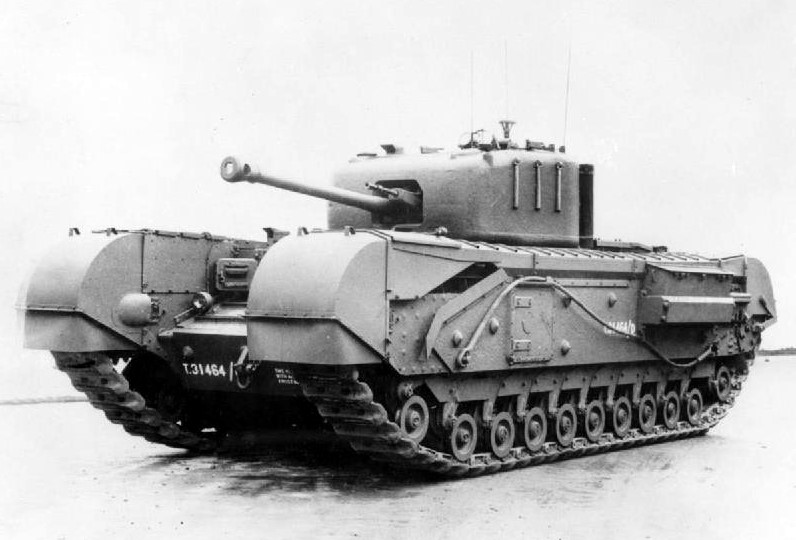
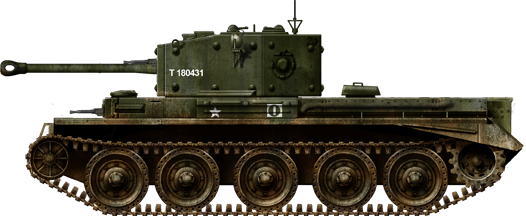
A24 Mosley
Producer: Nuffield Mechanization and Aero Co.
In Service: 1943 - 1945
Armament: 75 mm
Armor: 76 mm
Number Produced: 1,000A projected successor to the Cromwell Mosley was ordering them and planning on putting them in a suppression role in the soon to be occupied Germany. However by the time they began to roll off the assembly line the War was already turning against the Internationale decisively. Instead of that Mosley hastily ordered them to be retrofitted to instead aid in a last ditch, Hail Mary attempt to strike deep in Germany's heart. In 1943 the Mosley supported a daring landing at Wilhelmshaven and was crucial in forming the initial beachhead. However, in the ensuing counterattack by Reikspakt allied forces they were all destroyed and the landing crushed. In a final bout of resistance before escaping Lawrence of Germania used some IEDs brought with him to mangle the Wilhelmshaven port, forcing the German High Seas Fleet to disperse to other ports.

Renault AMR 39
Producer: Renault
In Service: 1939 - 1945
Armament: 7.5 mm machine gun
Armor: 13 mm
Number Produced: 874The radical Jacobin regime in the Commune was a party of old faces. Largely men who fought for the Reds in the Civil War in both France then in Russia they saw a infantry armor, with the support of tanks, as the way to go. Despite many fresh faces urging them to push for more modern tanks, as their neighbors quickly surpassed them, Valois instead mobilized their men and planned to use their numbers to crush the enemy. As 1939 dawned and tensions over the return of Haute-Savoie rose Valois scrambled to catch up on a race the Commune was four years behind on. Finally the AMR was rushed into service and quickly became the dumpster fire it was seemingly destined to be. With paper thin armor and no heavy canon they were little more than a mobile machine gun crew. The few hundred that were produced were largely lost in the early days and weeks of the war and the only one to survive did so when its driver took it home and hid it in his shed for forty years.
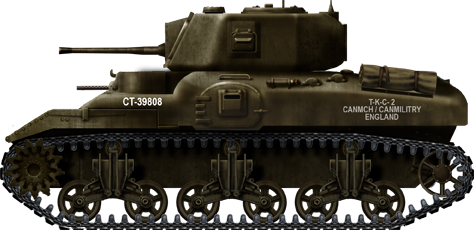
King Edward
Producer: Canadian Pacific Railway
In Service: 1938 - 1946
Armament: 57 mm
Armor: 87 mm
Number produced: 7,000When King Edward took his throne in 1937 his number one focus was the eventual reclamation of the Home Isles. To do this he realized that his army needed armor, something that it lacked ever since fleeing to Canada so many years ago. However Canada was not in an industrial position to design, build and then deploy tanks. So, using Exiles like Bernard Montgomery in conjunction with Canadian Pacific Railway, who had the only factories capable of building tanks, came up with the King Edward line of tanks. The three main variants had three different jobs; the Kind Edward A1 was a marine tank and light enough to go to shore with the marines, the King Edward A2 was a standard medium tank to aid in conventional warfare, and the King Edward A3 was more a chassis than a tank with interchangeable AT, AA and SPA turrets. To do this Canada's entire industrial capacity was switched to wartime focus and after many growing pains including the drafting and passing of Bill C-7 that gave King Edward 'temporary' Imperial Prerogative, the King Edward became the warhorse of the Entente. Leading the Reclamation and going down as one of the greatest feats of tank design in the Second Weltkrieg.

MAN Landshiff-A1 (Heavy Tank)
Producer: MAN, Krupp, Rheinmetall
In Service: 1939 - 1951
Armament: 75 mm/ 105 mm howitzer
Armor : 185 mm
Number Produced: 20
Produced in tandem by the industrial giants MAN, Krupp Steel and Rheinmetall as a proof of concept more than anything the Landshiff was a true monster of a tank. During tests in 1937 however it was found to be to heavy and slow to be used in sustained offensive operations with a top speed of just 15 kmph (9 mph). However the Kaiser was infatuated with them and was insistent that they be used by the Army on a major scale to crush the French under their treads. However, Heinz Guderian was able to speak to the Kaiser and convince him of their infeasablilty so he allowed the Army to make their own decision. After improvements in 1938 it was deemed fit for service, however with a limited roll. As the Commune fortified their borders with the Reikspakt German High Command worried about whether they would be able to break through the admittedly formidable fortifications with their infantry based doctrine. So, Field Marshal Guderian asked for 20 of these tanks to use smash the French lines and allow for the newly developed blitzkrieg to be used in what Guderian called Abrissbirnen (wrecking ball) doctrine. After their initial goal of breaking the Maginot Line was achieved in the early months of Summer 1940 most were converted to fulfill self-propelled artillery rolls although records indicate that one or two were kept with their 75 mm cannon for propaganda purposes. They were kept as the official heavy tank of the German Empire before the heavy tank was phased out of the doctrine in the early 1950's and any surviving models were turned into museum pieces.

Panzer IV 'Ratte'
Producer: MAN, Porsche
In Service: 1936 - 1960
Armament: 7.5 cm Kwk 40/L 48
Armor: 80mm
Number Produced: 15,487
Producer: MAN, Krupp, Rheinmetall
In Service: 1939 - 1951
Armament: 75 mm/ 105 mm howitzer
Armor : 185 mm
Number Produced: 20
Produced in tandem by the industrial giants MAN, Krupp Steel and Rheinmetall as a proof of concept more than anything the Landshiff was a true monster of a tank. During tests in 1937 however it was found to be to heavy and slow to be used in sustained offensive operations with a top speed of just 15 kmph (9 mph). However the Kaiser was infatuated with them and was insistent that they be used by the Army on a major scale to crush the French under their treads. However, Heinz Guderian was able to speak to the Kaiser and convince him of their infeasablilty so he allowed the Army to make their own decision. After improvements in 1938 it was deemed fit for service, however with a limited roll. As the Commune fortified their borders with the Reikspakt German High Command worried about whether they would be able to break through the admittedly formidable fortifications with their infantry based doctrine. So, Field Marshal Guderian asked for 20 of these tanks to use smash the French lines and allow for the newly developed blitzkrieg to be used in what Guderian called Abrissbirnen (wrecking ball) doctrine. After their initial goal of breaking the Maginot Line was achieved in the early months of Summer 1940 most were converted to fulfill self-propelled artillery rolls although records indicate that one or two were kept with their 75 mm cannon for propaganda purposes. They were kept as the official heavy tank of the German Empire before the heavy tank was phased out of the doctrine in the early 1950's and any surviving models were turned into museum pieces.

Panzer IV 'Ratte'
Producer: MAN, Porsche
In Service: 1936 - 1960
Armament: 7.5 cm Kwk 40/L 48
Armor: 80mm
Number Produced: 15,487
Nicknamed "The Tank that Built the Reich" the Panzer IV was the most produced tank of the conflict and is frequently listed as one of tanks ever made. Its speed, 32 - 48 kmph (24 - 26 mph), was a major boon over many of its competitors and its reliability was also a large bonus. In the early days of the war the French had no counter to its heavier armament keeping it barely within the 'medium tank' designation. Variants were made to fit every situation, a AA, artillery, anti-tank and ungunned APC version were all produced within the long lifespan. Because of its almost thirty year lifespan it's visage has become a staple of the public's perception of German military might with famous series Tank Combat: World at War featuring it predominately along with its brothers the Panzer III and Panzer V. Its large caliber was perfect for punching through the light armor of Communard armor and its only real challenge was the Unionist Cromwell whose designation of an 'infantry tank' betrayed a large gun and heavy armor. Some of the most famous tank aces in the Weltkrieg, Otto Carius, Paul Egger, and Ukrainian Dmitry Lavrinenko all earned their fame in this tank. It's last iteration, the Panzer IV A-5 was phased out in 1960 and the Panzer V 'Panther' took its place as a new class of tank, the Main Battle Tank, of the German Wehrmacht.

Sturmgeschutz III (StuG III)
Producer: Krupp
In Service: 1935 - 1942
Armament: 7.5 StuK L48
Armor 20 mm
Number Produced: 7,500

A20 Cromwell
Producer: Vickers
In Service: 1939 - 1945
Armament: 75 mm
Armor: 50 mm - 100 mm
Number Produced: 10,041
One of the first tanks produced after Mosley and his Totalist regime came to power the A20 was the first of a projected continuing line of "Infantry Tanks" built to aid in infantry advances. It was shown off when Mosley seized total power in 1939 when Mosley had a prototype named Chairman lead the March on the T.U.C. It was upon the Chairman that Mosley gave his now infamous 'Power and Politics' speech outside the burned out TUC building. This cemented the A20 as the staple tank for the Mosley regime. When they started to roll off the assembly lines they quickly found themselves putting down a Autonomous rebellion in Scotland where Mosley's doctrine of 'Infantry Tanks' was perfected and the R.E.A. learned how to integrate them into their units. At the same time more and more were sent to France to bolster the French line on the Franco-German border. When the war finally broke out and the Maginot Line collapsed under the weight of the German onslaught the Cromwell distinguished itself as the 'Rat Trap' for its talent at killing Panzer IV's. They quickly became the staple of the British armored corps and dozens were ordered in anticipation of a counterattack that never came. Instead they were increasingly sent to plug the holes in the line. After the Fall of France however most were lost or abandoned by the R.E.A. and the few who were on the Isles were destroyed by the Luftwaffe during the Invasion. Now, the few who were salvaged are owned by the Imperial War Society and are on display in Ottawa.Producer: Vickers
In Service: 1939 - 1945
Armament: 75 mm
Armor: 50 mm - 100 mm
Number Produced: 10,041

A24 Mosley
Producer: Nuffield Mechanization and Aero Co.
In Service: 1943 - 1945
Armament: 75 mm
Armor: 76 mm
Number Produced: 1,000

Renault AMR 39
Producer: Renault
In Service: 1939 - 1945
Armament: 7.5 mm machine gun
Armor: 13 mm
Number Produced: 874

King Edward
Producer: Canadian Pacific Railway
In Service: 1938 - 1946
Armament: 57 mm
Armor: 87 mm
Number produced: 7,000
Public housing in the CSA
After the end of the Second American Civil War, the victorious Combined Syndicates of America inherited a largely devastated land. Many towns and cities were destroyed by the war, and many factories lied in ruins. The most pressing problem, however, was housing shortage. Hundreds of thousands of people were forced to live in overcrowded old buildings and tenements, with living conditions often comparable to those of late 18th century slums. Many were homeless.

A main street in a small Midwestern town, 1945. It's actually very well-off by post-war standards.

A slum in Chicago, the capital of CSA, 1945
Small scale apartment construction was carried out since the war's end (hampered by post-war fuel and material shortages), but it was insufficient. According to official statistics, more than half of urban residents still lived in bunkhouses and shacks in 1950.
CSA urban planners wanted to radically reconstruct American towns and cities in the new, Syndicalist image. Inspired by Communard French architect Le Corbusier, they planned to replace sprawling slums and leftover low-density suburban housing (which they regarded as a highly inefficient use of land) with large apartment complexes, connected with city centres and industrial districts via public transport.
The trendsetting residential project was the Wendell O. Pruitt Housing Complex in St. Louis (1954-1955).



Many similar apartment buildings soon appeared all across the CSA. Seemingly luxurious compared to bunkhouses, they often suffered from poor quality construction, as many were built in a hurry. In some areas, they were assembled from prefabricated concrete panels, a method deemed cheaper and faster.

Such districts became the main feature of many American towns and cities since the late 1950s.
After the end of the Second American Civil War, the victorious Combined Syndicates of America inherited a largely devastated land. Many towns and cities were destroyed by the war, and many factories lied in ruins. The most pressing problem, however, was housing shortage. Hundreds of thousands of people were forced to live in overcrowded old buildings and tenements, with living conditions often comparable to those of late 18th century slums. Many were homeless.

A main street in a small Midwestern town, 1945. It's actually very well-off by post-war standards.

A slum in Chicago, the capital of CSA, 1945
Small scale apartment construction was carried out since the war's end (hampered by post-war fuel and material shortages), but it was insufficient. According to official statistics, more than half of urban residents still lived in bunkhouses and shacks in 1950.
CSA urban planners wanted to radically reconstruct American towns and cities in the new, Syndicalist image. Inspired by Communard French architect Le Corbusier, they planned to replace sprawling slums and leftover low-density suburban housing (which they regarded as a highly inefficient use of land) with large apartment complexes, connected with city centres and industrial districts via public transport.
The trendsetting residential project was the Wendell O. Pruitt Housing Complex in St. Louis (1954-1955).



Many similar apartment buildings soon appeared all across the CSA. Seemingly luxurious compared to bunkhouses, they often suffered from poor quality construction, as many were built in a hurry. In some areas, they were assembled from prefabricated concrete panels, a method deemed cheaper and faster.

Such districts became the main feature of many American towns and cities since the late 1950s.
Some more random pop-culture tidbits from my KR setting:

Christopher Lee as secret agent Daniel Drake in Claws of the Tiger (1970). Lee would play the character - based on the novel series by writer Ian Fleming - for a total of seven films from 1965 on. Most fans would be of the opinion that Lee was the quintessential Drake, combining charm and an air of utter menace that fit with the dark undertones of the films.
Lee, a half-Italian Exile, was a major star of Commonwealth war cinema and thrillers throughout the 1960s and 1970s, frequently drawing on his wartime experiences as a Royal Marine Commando - and making use of that training in the performance of stunts. He would also branch out into other genres in later life, including lending his voice to the English language dub of the Japanese Legend of Zelda animated film as Ganondorf.
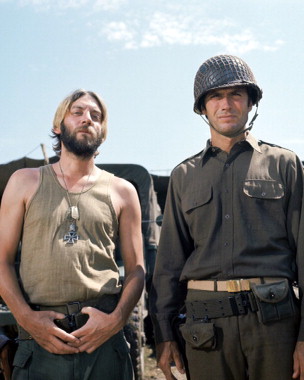
Donald Sutherland and Clint Eastwood in joint PSA-Canadian war film Vultures, released in 1970. The film centres around the efforts of a group of US soldiers in Utah during the Second North American War to locate and steal a cache of hidden gold, taken and hidden by PSA forces during the evacuation of Salt Lake City. Though the film isn't based on a specific event, it was an effort by the writer and director to encapsulate the criminal activity of certain US forces during the conflict, with a number of scenes based on reality showing US soldiers 'requisitioning' material from Mormon families and homes.

From left to right: Twilight; Thorn; and Aurora, the main characters of the popular PSA cartoon 'Wyches' (2000-2005). The cartoon told the story of the titular 'Wyches' band, a loco group themed around magic and environmentalism...who are also magically-inclined themselves, and use their powers to solve mysteries and battle evil monsters and magic-users.
As well as being popular for mostly-entertaining stories and genuinely good soundtrack, the show was very much a 'message' programme. Not only did it contain strong environmental themes, coming out when the PSA and the Asia-Pacific Co-Prosperity Sphere were beginning to really lead the world in green technology, but it also promoted a strong message of religious tolerance. In-show, each of the characters came from a different religious background: Thorn being a Wicca; Twilight being a practicing Jew; and Aurora being Christian. Despite different beliefs, the three characters were depicted as being the best of friends, utterly accepting of one another's beliefs, and always there for one another. The show attracted a great deal of positive feedback for its message of tolerance, and for its research into the faiths of its three main characters - indeed, it would be praised for giving an accurate understanding of Wicca, a sizeable minority faith in the PSA.
Are those the Hex Girls from the Scooby Doo films? Or am I being silly?
I think they areAre those the Hex Girls from the Scooby Doo films? Or am I being silly?
As the Scooby Dexpert of AH.com I can say that yes that is the Hex Girls. Looks to be from the 2003 mega-hit Scooby Doo and the Legend of the Vampire or it could be from their token Scooby Doo Where Are You apperencesAre those the Hex Girls from the Scooby Doo films? Or am I being silly?
Yep that's themAre those the Hex Girls from the Scooby Doo films? Or am I being silly?
Are those the Hex Girls from the Scooby Doo films? Or am I being silly?
It’s them. As a kid I always thought they deserved their own show...so here we are
Is alien space bats allowed in this thread?
----------------------------------------------------------------------
Unrelated Tax:

HQ of the United Nations Entente in Montreal, Quebec.
The United Nations Entente is a military alliance composed of 12 member states, it operates under a treaty of collective defense that swears to come into another nations defense in the event of outside attack, as well as engaging in interventions and peacekeeping operations. The UNE is known as a Democratic faction as many of it's members are governed under Democratic systems of government unlike the monarchs of MittelEuropa, the corporate autocrats of the APCPS and the Syndicalists of South America
(Based on the United Nations Alliance from 6 commando)
----------------------------------------------------------------------
Unrelated Tax:

HQ of the United Nations Entente in Montreal, Quebec.
The United Nations Entente is a military alliance composed of 12 member states, it operates under a treaty of collective defense that swears to come into another nations defense in the event of outside attack, as well as engaging in interventions and peacekeeping operations. The UNE is known as a Democratic faction as many of it's members are governed under Democratic systems of government unlike the monarchs of MittelEuropa, the corporate autocrats of the APCPS and the Syndicalists of South America
(Based on the United Nations Alliance from 6 commando)
@theg*ddam*hoi2fan
would you mind allowing to me start a pm with you,I tried but it says you are not a valid recipient.
would you mind allowing to me start a pm with you,I tried but it says you are not a valid recipient.
Share: